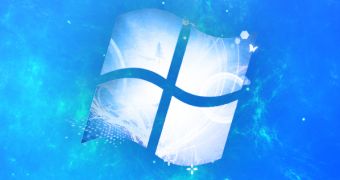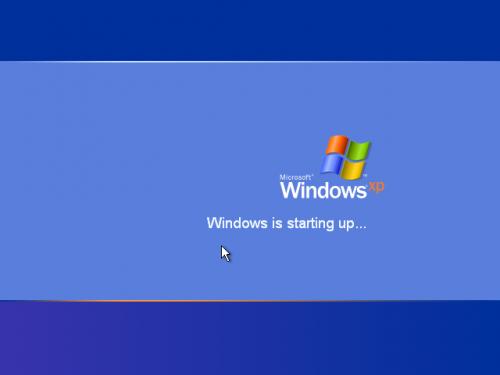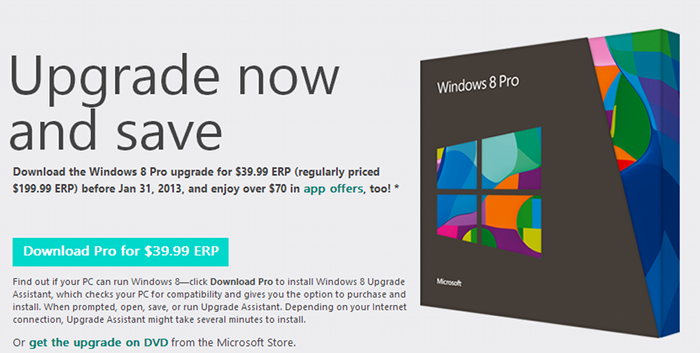Windows 8 was officially released on October 26, 2012, but everybody is already talking about the future Windows version that’s reportedly called “Blue.”
While it’s not yet confirmed, Windows Blue may be either a stand-alone version of Microsoft’s utterly-popular operating system or the first major upgrade for Windows 8 that’s supposed to bring a lot of improvements to an otherwise fairly controversial product.
‘So why is the interest in Windows Blue so high if Windows 8 was released only a few months ago?’ you may ask. And the reason is pretty simple.
Windows 8 is a heavily contested product that comes with several new features, some of them helpful, but many deemed confusing and difficult to use by the average Joe. As a result, sales are believed to be rather poor, despite Microsoft’s statements that it had sold 60 million copies in just two months.
In this regard, Windows Blue is considered a must-have revamp for Windows 8, an upgrade or a stand-alone OS that would fix many of the problems created by Microsoft with its new software.
That’s why we decided to review all early details about Windows Blue, but keep in mind that all of them are only rumors, as Microsoft has decided to remain completely tight-lipped on the subject.
Name
Even though some would expect the Windows 8 successor to be called Windows 9, sources familiar with the matter have hinted in mid-2012 that Microsoft was pondering a completely new designation.
But Windows Blue wasn’t the only codename that sounded intriguing for Microsoft. Insiders revealed that Microsoft previously went for Windows 9 (obviously), but also for Windows Next or vNext, a nickname that would better emphasize the evolution brought to users by a reinvented operating system.
In the end, it seems like Windows Blue is currently the number one choice for Microsoft, even though we won’t be surprised at all if the Redmond-based technology giant decides to change the name just before the official launch. The same has happened with the Metro UI, which has been renamed to Modern, but everybody still uses the original codename.
A work in progress
Microsoft is currently working on the next Windows version and this isn’t surprising at all. In the automotive industry, when a car manufacturer releases a new model, the company is nearly done with its first facelift, but it uses the remaining time to test and improve the project.
As far as Windows Blue goes, the first hint that Microsoft is working on a new Windows iteration emerged in mid-2012, just after several company employees updated their online profiles to state that they’re working on a new project.
Several Microsoft employees and executives have already confirmed that they're working on a new Windows version, called either Windows 9 or Windows Blue. “Windows.next (current). My focus is on all aspects of identity, for enterprise and consumer markets, both online and on the PC,” a status message posted by a Microsoft employee read.And still, one of the first official indications that a new Windows contraption is under development came in October when James Akrigg, Microsoft's head of technology for partners, confirmed at Misco Expo 12 in the United Kingdom that Windows 9 was a work in progress.
“It should just work. I'm not going to say we're going to do it [reach perfection] with Windows 8 because we're already working on Windows 9,” he said when talking about his expectations for Windows 8.
Features
Of course, it’s way too early to discuss about Windows Blue features, but we’ve heard quite a lot of rumors regarding the goodies to be bundled into the next Windows iteration.
Inevitably, it all begins with the Start button. Windows 8 is the first modern operating system rolled out by Microsoft that doesn’t boast the traditional Start button, a minor option that apparently affects sales more than everybody expected.
Instead of the Start button, Windows 8 comes with a Start Screen which, in the opinion of several Microsoft executives, is a much better choice because “it provides an entire screen with apps instead of a small button.” And that’s more or less true. But users still need a Start button anyway.
Windows Blue, however, won’t bring such a feature. Instead, it will keep the Start Screen and will eventually make it a bit more user-friendly. We’ve heard that Microsoft plans to introduce some new customization options, plus a slightly revised look to make it a bit more appealing. Maybe this way consumers could get used to it, who knows.
Windows Blue won't dump the Start Screen for a new Start button, but instead it'll come with some new customization options. In this regard, it appears that third-party software solutions that bring a Start button on Windows may be the only solution, but given the fact that Windows Blue is likely to be the second OS with a Start Screen, consumers may in the end get used to it.The taskbar is also expected to receive some minor interface changes, but nothing too extreme, so it won’t be very different from the one you can see right now on Windows 8.
The desktop will still be there, obviously, even though Microsoft seems to love the Metro/Modern UI more than everybody else. But overall, it would feature a similar look with small changes here and there.
Last but not least, Windows Blue will most likely switch to kernel version 6.3 that would allow Microsoft employees to do some technical changes that won’t be directly visible to users. This could help the software be faster and a bit more stable, even though the current Windows 8 OS doesn’t seem to be such an unstable product.
Pricing
And this is where all the fun begins. According to another bunch of rumors, Windows Blue could even be offered for free. That’s right, a Windows operating system offered at no cost. The same sources, however, suggest that Microsoft may also consider a very small fee, but in the end, Windows Blue will remain a very affordable operating system.
And the reason behind this decision is, again, simple and makes a lot of sense. Microsoft needs users to move away from older operating systems, such as Windows XP, the 11-year-old product that’s still unbelievably popular.
Microsoft has a special discount for Windows 8 available until January 31. According to recent data, Windows XP has a market share of more than 39 percent and is the second most popular OS after Windows 7, even though Microsoft has already announced that it would stop providing support for XP in April, 2014.A cheap upgrade would obviously support this migration to newer operating systems, even though we’ve heard that Windows Blue may only be available for users of previous Windows versions with a genuine product key.
As a result, Windows Blue may only be up for grabs for existing Windows clients willing to upgrade, while new consumers would still be required to purchase a previous Windows copy, such as Windows 8, and only then get the “free” or the “low-cost” Windows Blue.
Release date
Windows Blue may be released as soon as… hold your breath… mid-2013. That’s right, mid-2013, despite the fact that Windows 8 got to see daylight in October, 2012.
And the date could make sense. Sort of.
Because of the disappointing sales performance of Windows 8, Microsoft may need to fix all problems quickly, so Windows Blue could be the one in charge with bringing the Windows brand back on most computers around the world.
Even though it may not comprise all features requested by users, such as a Start button, Windows Blue may be released this year to solve some of the issues with Windows 8. More like a facelift, if you wish, so Windows Blue may in the end be just a major upgrade for the existing OS.
Tablets
Just like Windows 8, Windows Blue could be installed on some new Microsoft tablets as well. But since the Redmond-based technology titan is also looking into ways to expand its Surface family with some new products, Windows Blue could make its way on several new devices, including tablets with 7- or 8-inch displays.
Sources familiar with the matter hint that Microsoft is also working on a 7-inch Xbox Surface tablet specifically created for gaming purposes, so in case Windows Blue would be running on this device, this means the OS might be a more attractive choice for gamers too.
It appears that Microsoft is working on several new tablets right now, most of them to be released sometimes this year, so Windows Blue may actually power some of these devices too.
Microsoft's Surface RT is powered by Windows RT, but the Surface with Windows 8 Pro will be released in a few weeks. Update: here's what a concept of the upcoming Windows Blue looks like.
 14 DAY TRIAL //
14 DAY TRIAL // 


